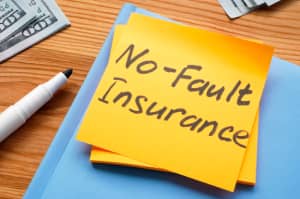Understanding No-Fault vs At-Fault Insurance Systems in Car Accident Cases
Car accidents can be a stressful and overwhelming experience, and understanding the intricacies of
insurance systems can add to the confusion. Two primary insurance systems in the United States, the
“No-Fault” and “At-Fault” systems, dictate how compensation is handled after a car accident. This article
aims to explain both approaches, their differences comprehensively, and how they impact individuals
involved in car accidents.
NO-FAULT INSURANCE SYSTEMS IN THE UNITED STATES:
Several states operate under a no-fault insurance system in the United States, including Florida, New
York, and Michigan. Here’s an in-depth look at how the no-fault system functions:
In a no-fault system, each driver’s insurance company pays for their policyholder’s injuries and damages,
regardless of who is at fault for the accident. This system is designed to expedite the claims process and
reduce the burden on the legal system.
Benefits:
● Prompt Compensation: Under the no-fault system, individuals involved in an accident receive
compensation quickly, as there’s no need to determine fault before receiving payment.
● Reduced Legal Battles: No-fault systems aim to reduce the number of personal injury lawsuits,
which can save time and money for both insurers and policyholders.
Drawbacks:
● Limited Right to Sue: In most no-fault states, injured parties have limited rights to sue for
additional damages, primarily reserved for severe injuries or excessive medical bills.
● Potentially Higher Premiums: Insurance premiums may be higher in no-fault states due to
increased claims frequency.
AT-FAULT INSURANCE SYSTEM IN THE UNITED STATES- WHAT ARE THE BENEFITS?
Many states in the U.S. follow an at-fault insurance system, including California, Texas, and Ohio.
In an at-fault system, the driver responsible for the accident is liable for the injuries and damages caused
to the other party. The at-fault party’s insurance company compensates the injured party.
Benefits:
● Full Compensation: Injured parties can pursue total compensation, including medical bills, lost
wages, pain and suffering, and other damages.
● Legal Recourse: If the responsible driver’s insurance is insufficient, the injured party can file a
lawsuit against the at-fault driver for further compensation.
Drawbacks:
● Legal Battles: At-fault insurance systems often lead to lengthy and contested legal battles, which
can be time-consuming and costly.
● Proving Fault: Determining fault and liability can be a complex process, requiring evidence,
witnesses, and legal expertise.
DIFFERENCES BETWEEN NO-FAULT AND AT-FAULT SYSTEMS:
According to the Oklahoma car accident lawyers at Dan Davis Law, at-fault insurance systems demand that the at-fault driver, a city road maintenance agency who failed to address a hazard, or the manufacturer of a defective car part pay for damages—typically through the liability policy on their insurance. This contradicts the handful of no-fault states where accident victims file claims against their
insurance companies.
No-fault systems limit the injured party’s right to sue, while at-fault systems allow injured parties to seek
compensation beyond what insurance covers.
Premiums may be higher in no-fault states due to the increased frequency of claims, while at-fault states may see lower premiums but with the potential for higher costs in the event of an accident.
ACCIDENTS WHERE YOU ARE NOT AT FAULT:
In both insurance systems, it’s crucial to understand what to do in cases where you are not at fault. Here’s a brief overview:
1. Gather Evidence: Collecting evidence is essential whether you’re in a no-fault or at-fault state.
Take photos of the accident scene, the damages to all vehicles involved, and any visible injuries.
2. Exchange Information: Exchange contact and insurance information with all parties involved in
the accident. It’s crucial to have this information for insurance claims and potential legal actions.
3. File a Police Report: If there are injuries or significant damages, it’s wise to involve law
enforcement. A police report can provide an objective account of the accident.
WHAT TO DO IN CASES OF NEGLIGENCE:
If you believe the accident occurred due to the negligence of another party, you should consider the following steps:
Notify your insurance company about the accident. In a no-fault state, your insurer will handle your
claim, but in an at-fault state, the at-fault party’s insurance should cover your damages.
If you suspect negligence on the other driver's part or face difficulties with your insurance claim,
consulting an experienced car accident attorney is advisable. They can help protect your rights and ensure
you receive your deserved compensation.
